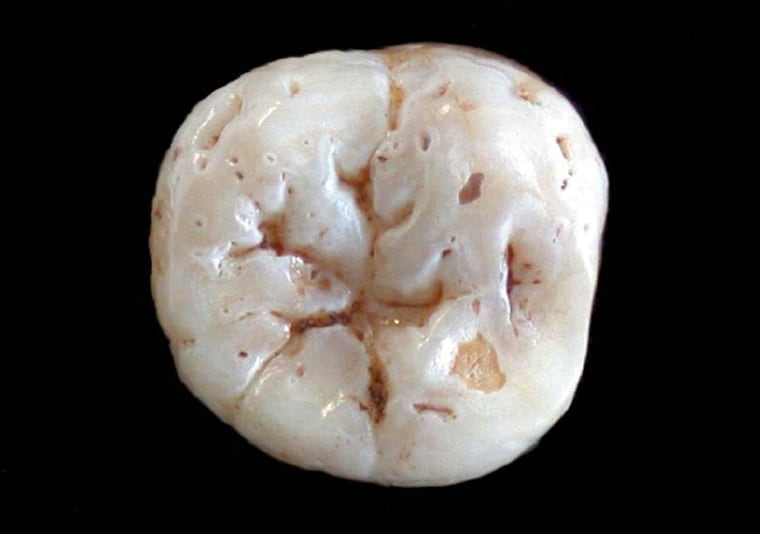Analysis of a 40,000-year-old tooth found in southern Greece suggests Neanderthals were more mobile than once believed, paleontologists and the Greek Culture Ministry said Friday.
Analysis of the tooth — part of the first and only Neanderthal remains found in Greece — showed the ancient human to whom it belonged had spent at least part of its life away from the area where it died.
"Neanderthal mobility is highly controversial," said paleoanthropology Professor Katerina Harvati at the Max Planck Institute for Evolutionary Anthropology in Leipzig, Germany.
Some experts believe Neanderthals roamed over very limited areas, but others say they must have been more mobile, particularly when hunting, Harvati explained.
Ian Tattersall, curator of anthropology at the American Museum of Natural History in New York, said the tooth analysis provided a rare piece of hard evidence.
"This is a very interesting finding in the sense that we don't actually know how far Neanderthals tended to move in their lifetime," said Tattersall, who is not connected to the Greek study.
"It is consistent with the picture that is building of Neanderthals leading a fairly mobile life over large tracts of land."
Until now, experts only had indirect evidence, including stone used in tools, Harvati said. "Our analysis is the first that brings evidence from a Neanderthal fossil itself," she said.
Harvati was part of the team that carried out the analysis on the tooth, found in a seaside excavation in Gythio in Greece's southern Peloponnese region in 2002.
The findings were published in the Journal of Archaeological Science.
The team from the Max Planck Institute, led by Department of Human Evolution professor Mike Richards and Harvati, analyzed tooth enamel for ratios of strontium isotope, a naturally occurring metal found in food and water. Levels of the metal vary in different areas. As it is absorbed by the body, an analysis of its levels can show where a person lived.
Eleni Panagopoulou of the Paleoanthropology-Speleology Department of Southern Greece said the levels of strontium isotope found in the tooth showed that this particular Neanderthal grew up in a different area — at least 12.5 miles away — from its discovery site.
"The analysis results ... will contribute to solving one of the central issues of paleoanthropology, that of the mobility of the Neanderthal," Panagopoulou said.
"Our findings prove that their mobility was significant and that their settlement networks were broader and more organized than we believed," she said.
Given that Neanderthals also coexisted with modern man in some parts of Europe, "one could presume that this mobility would facilitate the contacts of the two populations on a cultural and, perhaps, on a biological level."
Professor Clive Finlayson, an expert on Neanderthal man and director of the Gibraltar Museum, disagreed with the finding's significance.
"The technique is interesting, and if we could repeat this over and over for lots of (individuals) then we might get some kind of picture," he said.
"(But) I would have been surprised if Neanderthals didn't move at least 20 kilometers (12.5 miles) in their lifetime, or even in a year ... We're talking about humans, not trees."
